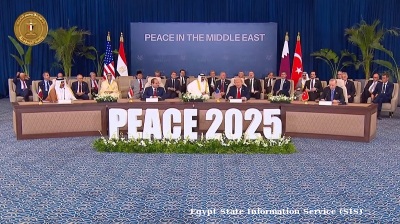Bolivia heads to the polls on August 17 in what could become the first presidential election in its history to be decided in a second round by popular vote, reflecting a fractured political field and deep economic instability. Polling data from Ipsos-Ciesmori places centrist and right-leaning candidates at the forefront, while the ruling left struggles with internal division and waning public support after two decades in power.
The contest follows the exclusion of former far-left president Evo Morales, ruled ineligible by the Constitutional Court in May on the grounds that indefinite re-election is prohibited. His disqualification has sparked protests, road blockades, and a campaign among his supporters for voters to spoil their ballots. This has pushed the projected rate of null votes above 13%, a figure that political analyst Gonzalo Mendieta told Bloomberg Línea would be unprecedented in Bolivia’s presidential elections.
Eight candidates remain, led in polls by Samuel Doria Medina of the centre-right National Unity party and Jorge “Tuto” Quiroga of the right-wing Libre party, both with support in the high teens. Andrónico Rodríguez, president of the Senate and seen as the most prominent left-wing contender, trails well behind at around 6–12% depending on the survey. Other figures include Manfred Reyes Villa, the conservative mayor of Cochabamba; Rodrigo Paz Pereira of the Christian Democratic Party; and Eduardo del Castillo, the MAS candidate and former interior minister, who is polling at just over 2%.
Long-running dire economic conditions have sharpened the political divide. As Reuters reported, the South American nation faces its most severe financial strain in decades: inflation at a forty-year high, dwindling foreign reserves, and falling gas export revenues. Central bank data shows reserves at roughly $165mn in April, with JPMorgan estimating liquid reserves as low as $100mn—barely two months’ worth of imports, according to the IMF.
The country’s $13.3bn external debt includes $1.8bn in hard-currency bonds, much of it maturing in the next three years. Debt service now competes directly with funding for fuel and food imports. Credit rating agencies, including S&P Global, have downgraded Bolivia deeper into junk territory, warning of repayment risks within 6–12 months.
Markets have nonetheless responded positively to the prospect of a rightward political shift. Bolivian bonds, which began the year under 60 cents on the dollar, are now trading in the mid-70s, one of the strongest performances in JPMorgan’s emerging markets index. Citigroup upgraded its stance on Bolivian debt to “neutral” from “underweight”. Investors see a potential IMF programme as a turning point, though it would require ending the dollar peg, removing capital controls, and phasing out fuel subsidies, reforms likely to be politically contentious.
The ruling leftist MAS, long dominant under Morales and his successor and former ally Luis Arce, has been weakened by a split between the two figures, resulting in legislative paralysis and difficulty approving foreign loans. Erstwhile MAS allies have either joined Rodríguez’s coalition or left politics entirely, as in the case of former El Alto mayor Eva Copa, who cited political harassment in her resignation.
Political scientists warn that the combination of high null and blank vote intentions—over 20% combined—and more than 12% undecided voters could produce an outcome where no candidate commands a strong mandate. Mendieta cautions that the next administration will face a “rapid open-heart surgery” on the economy without the political capital typically needed for such reforms.
If no candidate secures more than 50% of the vote, or 40% with a 10-point lead, a likely scenario, a runoff will be held on October 19. Betting markets, according to Reuters, give Doria Medina a better than even chance of winning, with his platform centred on restoring central bank independence, cutting public spending, and opening the economy to foreign investment—particularly in lithium. Quiroga proposes sweeping legal reforms, new trade agreements, and a break from anti-US alignment with Venezuela, Cuba, and Nicaragua. Rodríguez focuses on defending natural resources, state-led development, and rebuilding the left’s unity.
Analysts such as Daniel Moreno believe a shift to the centre-right is likely, but stress that Bolivia’s next leadership will be more institutional than the authoritarian trends seen in some other countries. However, they also warn that Morales, now heading a new political party, could remain a disruptive opposition force.
As the economic crisis deepens and political loyalties splinter, next week's election is set to test whether voters prioritise market-oriented recovery measures or continuity with state-led policies, and whether any government formed in such a divided environment can carry out the drastic economic surgery the IMF and investors say is unavoidable.
News

US, Egypt, Qatar, and Turkey sign agreement to end Gaza war at Sharm El-Sheikh Summit
The US, Egypt, Qatar, and Turkey have signed a binding peace document on October 13, guaranteeing the ceasefire in the Gaza Strip, marking what President Trump called “perhaps the greatest achievement” of his presidency.

Pakistan, Afghanistan exchange fire along contested Durand Line
Pakistan has claimed responsibility for killing over 200 Taliban fighters in a series of precision strikes along the contested Durand Line.

Trump lands in Tel Aviv as Israeli hostages begin return home
Donald Trump arrives in Israel as the first Israeli hostages are released from Hamas' captivity.

Von der Leyen to confront Hungary’s EU Commissioner over reported espionage attempts in EU institutions
European Commission President Ursula von der Leyen intends to personally discuss espionage allegations with Hungarian Commissioner Oliver Várhelyi, Commission spokeswoman Paula Pinho said at a press briefing in Brussels on October 10.

_Cropped.jpg)
_1760010211.jpg)
_1759927176.jpg)
.jpg)